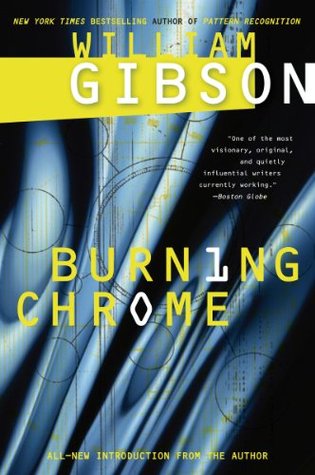More on this book
Community
Kindle Notes & Highlights
i put the shotgun in an Adidas bag and padded it out with four pairs of tennis socks, not my style at all, but that was what I was aiming for: If they think you’re crude, go technical; if they think you’re technical, go crude. I’m a very technical boy. So I decided to get as crude as possible. These days, though, you have to be pretty technical before you can even aspire to crude-ness.
And the Yakuza would be settling its ghostly bulk over the city’s data banks, probing for faint images of me reflected in numbered accounts, securities transactions, bills for utilities. We’re an information economy. They teach you that in school. What they don’t tell you is that it’s impossible to move, to live, to operate at any level without leaving traces, bits, seemingly meaningless fragments of personal information. Fragments that can be retrieved, amplified . . .
The Thirties had seen the first generation of American industrial designers; until the Thirties, all pencil sharpeners had looked like pencil sharpeners—your basic Victorian mechanism, perhaps with a curlicue of decorative trim. After the advent of the designers, some pencil sharpeners looked as though they’d been put together in wind tunnels. For the most part, the change was only skin-deep; under the streamlined chrome shell, you’d find the same Victorian mechanism. Which made a certain kind of sense, because the most successful American designers had been recruited from the ranks of
...more
The designers were populists, you see; they were trying to give the public what it wanted. What the public wanted was the future.”
Architectural photography can involve a lot of waiting; the building becomes a kind of sundial, while you wait for a shadow to crawl away from a detail you want, or for the mass and balance of the structure to reveal itself in a certain way.
During the high point of the Downes Age, they put Ming the Merciless in charge of designing California gas stations. Favoring the architecture of his native Mongo, he cruised up and down the coast erecting raygun emplacements in white stucco. Lots of them featured superfluous central towers ringed with those strange radiator flanges that were a signature motif of the style, and made them look as though they might generate potent bursts of raw technological enthusiasm, if you could only find the switch that turned them on.
I found myself wondering what the inhabitants of that lost future would think of the world I lived in. The Thirties dreamed white marble and slip-stream chrome, immortal crystal and burnished bronze, but the rockets on the covers of the Gernsback pulps had fallen on London in the dead of night, screaming. After the war, everyone had a car—no wings for it—and the promised superhighway to drive it down, so that the sky itself darkened, and the fumes ate the marble and pitted the miracle crystal. . . .
They were the children of Dialta Downes’s ’80-that-wasn’t; they were Heirs to the Dream. They were white, blond, and they probably had blue eyes. They were American. Dialta had said that the Future had come to America first, but had finally passed it by. But not here, in the heart of the Dream. Here, we’d gone on and on, in a dream logic that knew nothing of pollution, the finite bounds of fossil fuel, or foreign wars it was possible to lose. They were smug, happy, and utterly content with themselves and their world. And in the Dream, it was their world.
“Quit yelling and listen to me. I’m letting you in on a trade secret: Really bad media can exorcise your semiotic ghosts. If it keeps the saucer people off my back, it can keep these Art Deco futuroids off yours. Try it. What have you got to lose?”
Cristina Lazăr and 1 other person liked this
“Hell of a world we live in, huh?” The proprietor was a thin black man with bad teeth and an obvious wig. I nodded, fishing in my jeans for change, anxious to find a park bench where I could submerge myself in hard evidence of the human near-dystopia we live in. “But it could be worse, huh?” “That’s right,” I said, “or even worse, it could be perfect.”
Rubin, in some way that no one quite understands, is a master, a teacher, what the Japanese call a sensei. What he’s the master of, really, is garbage, kipple, refuse, the sea of cast-off goods our century floats on. Gomi no sensei. Master of junk.


